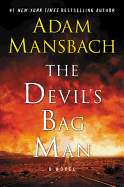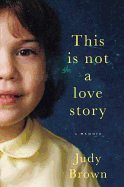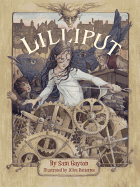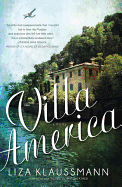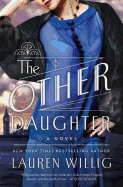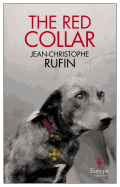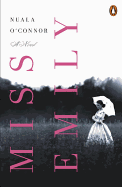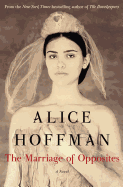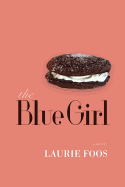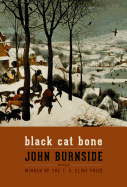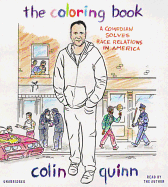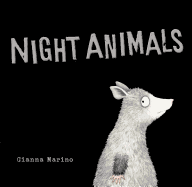Tuesday, August 4, 2015
Recently, Chronicle Books published Lists of Note: An Eclectic Collection Deserving of a Wider Audience, compiled by Shaun Usher. Usher's 125 lists, with facsimiles or illustrations, will intrigue and amuse, and sometimes surprise: Einstein, as his first marriage deteriorated, imposed conditions on his wife if they were to stay together, including "I will receive three meals regularly in my room.... You will stop talking to me if I request it." Predictably, she left him soon after. In 1951, then-starlet Marilyn Monroe came up with 17 "dream lovers" she'd like to bed if there were no strings attached. Albert Einstein made the cut. She must not have known about his predilection for control.
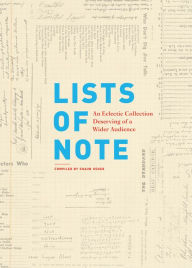 The 1940 Wartime Golf Rules of England's Richmond Golf Club include "In Competitions, during gunfire or while bombs are falling, players may take cover without penalty for ceasing play." Satchel Paige's advice to not ever look back ("somethin' might be gainin' ") is familiar; his Rules for the Good Life also include "Go very light on vices such as carryin' on in society. The social ramble just ain't restful." Theodore Roosevelt compiled a list of 93 birds seen in Washington, D.C., during his presidency. Filmmaker Preston Sturges drew up a list of 11 Rules for Box Office Appeal, ending with "9. A baby is better than a kitten. 10. A kiss is better than a baby. 11. A pratfall is better than anything."
The 1940 Wartime Golf Rules of England's Richmond Golf Club include "In Competitions, during gunfire or while bombs are falling, players may take cover without penalty for ceasing play." Satchel Paige's advice to not ever look back ("somethin' might be gainin' ") is familiar; his Rules for the Good Life also include "Go very light on vices such as carryin' on in society. The social ramble just ain't restful." Theodore Roosevelt compiled a list of 93 birds seen in Washington, D.C., during his presidency. Filmmaker Preston Sturges drew up a list of 11 Rules for Box Office Appeal, ending with "9. A baby is better than a kitten. 10. A kiss is better than a baby. 11. A pratfall is better than anything."
F. Scott Fitzgerald's conjugation of the verb "to cocktail"; Francis Ford Coppola's potential cast for The Godfather; Michelangelo's grocery list; H.P. Lovecraft's weird ideas; reasons for admission into the West Virginia Hospital for the Insane, 1864-1889 (decoyed into the army; seduction and disappointment); advice from Thelonious Monk; a 1250 B.C. limestone ostracon listing reasons for workmen's absences ("drinking with Khonsu"); 1895's advice for woman bicyclists (don't scream if you meet a cow.)--what an enjoyable book! You can't stop with just one list. --Marilyn Dahl, editor, Shelf Awareness for Readers
Villa America
by Liza Klaussmann
Gerald and Sara Murphy kept illustrious company on the French Riviera in the 1920s. The American expats, who partly inspired the characters Dick and Nicole Diver in F. Scott Fitzgerald's Tender Is the Night, entertained the likes of Pablo Picasso and Ernest Hemingway at spectacular soirées. But the pair's path didn't begin or end on the resplendent Riviera.
Villa America is Liza Klaussmann's fictionalized, elegantly rendered account of the Murphys' glamorous and tragic lives. She opens the novel with fleeting descriptions of two heartrending events that take place on the same day in 1935: the body of aviator Owen Chambers is retrieved from the sea off the coast of southern France and 15-year-old Baoth Murphy dies in a Boston hospital. Klaussmann then goes back in time, unfolding a compelling narrative that ties the occurrences together.
Klaussmann's descriptions of the Murphys' social scene are wonderfully vivid and immediate. It's like being invited to sip sherry with them on La Garoupe beach or mingling at one of their champagne-fueled fêtes, watching Zelda Fitzgerald twirl on a tabletop.
Villa America is an alluring and poignant novel that will appeal especially to Lost Generation fans as well as to readers seeking a satisfying story about the complexities of love, marriage and friendship. So pour a glass of your favorite tipple and be transported to the sun-soaked, star-studded French Riviera during the Roaring Twenties. Just be sure to have some tissues handy. Even the talented storytellers in the Murphys' circle couldn't conjure a happy ending for the once-golden couple when their fairy tale life fell apart. --Shannon McKenna Schmidt
Discover: The wealthy expat American couple who threw open the doors of their villa to Jazz Age luminaries.
The Other Daughter
by Lauren Willig
Lauren Willig (The Secret History of the Pink Carnation, The Ashford Affair) has mastered the creation of likable historical heroines. Rachel Woodley, Edwardian nursery governess, is no exception.
When Rachel's mother dies unexpectedly, Rachel discovers some shocking secrets about her past. The father she thought was dead is not only alive, he's an earl, with a debutante daughter and a wastrel son who show up frequently in the tabloids. Rachel realizes she's illegitimate, the other daughter, and that knowledge turns her world upside-down. Resolved to get to know her father, she enlists the help of a gossip columnist named Simon to transform herself into one of London's Bright Young Things. With freshly bobbed hair, a cigarette to hand and a steely determination to discover why her father left her and her mother, Rachel slips into her new persona amid the fast-paced world of high society London.
Willig does a superb job of portraying the pointlessly absurd pranks and parties that the fashionable elite of the 1920s participated in. With their inside jokes and their silly nicknames (Rachel's half-brother goes by the charming sobriquet of Jinksy), this generation seems unwavering in its frivolity. But Rachel soon finds that more lurks beneath the surface, and there are long-hidden reasons for her estrangement from her father. Is she ready to face the truth, or will she regret her elaborate deception?
Readers of other between-the-wars fiction like that of Jacqueline Winspear or Kate Morton are sure to appreciate the charm of The Other Daughter. --Jessica Howard, blogger at Quirky Bookworm
Discover: An Edwardian governess is desperate to discover why her father abandoned her.
The Red Collar
by Jean-Christophe Rufin, transl. by Adriana Hunter
A dog with no collar has been howling for two days outside the jail in a little French village. Jacques Morlac, though considered a hero of the Great War, has been imprisoned for an offense that mysteriously involves the dog, a crime that happened during the Bastille Day parade and for which he could be executed.
The Red Collar is a superbly crafted little gem that does everything a novel can do in less than 150 pages. Thrillingly paced, the story follows a 30-year-old military investigator on his last case before returning to his wife and two children. Formerly an idealist, now hardened by the war, Major Lantier finds himself in a village where everyone loves the imprisoned young man. Morlac was a conscripted country bumpkin who learned to read, found his salvation in books and became a hero who led a decisive charge before committing an outrage to the nation. Now his life depends on the investigator's report.
With the intensity of a tightly wound theater piece, the entire plot is carried on the shoulders of three good people and a dog, Wilhelm. The book's achievement is even more admirable because, besides being a novelist, Rufin is also a doctor and one of the founders of Doctors Without Borders. It's a lucky reader who gets to experience the power of The Red Collar, to become caught in this devilishly tricky moral trap about human beings who try to do the right thing in the time of war. --Nick DiMartino, Nick's Picks, University Book Store, Seattle, Wash.
Discover: A young hero of the Great War commits an outrage and may be executed.
Miss Emily
by Nuala O'Connor
Nuala O'Connor's intriguing American debut, Miss Emily, is about the poet Emily Dickinson. O'Connor skillfully imagines a fictional maid, 18-year-old Ada Concannon from Dublin, hired by the respected but odd Dickinson family as housekeeper and cook. Emily and Ada speak in alternating chapters, gently flowing back and forth, as this tender novel reveals their growing friendship.
Right from the start, Emily speaks of her desire for quiet and retreat, to be "free to pursue the things that please me." She revels in her imagination and what she can create with words. Into her isolated world enters the spunky Ada. Emily is twice her age, but the women immediately bond. O'Connor delves into Emily's being, trying to uncover what makes this spinster tick. Emily loves her family and is very fond of Susan, her brother Austin's wife. Miss Emily imagines how Dickinson's mind worked, how in her quiet world she was able to create the most wondrous poems, some of which she recites for Ada. And when the maid runs into trouble with men who help around the Dickinson home, she will require the kind of assistance that only Miss Emily can provide. "There is no better secret keeper than a Dickinson; we are able to close around our skeletons as snug as a shroud."
O'Connor takes readers deep inside the 19th-century Dickinson household. But she also has a bolder mission--to capture and explore the inner world of a secretive and mysterious genius. --Tom Lavoie, former publisher
Discover: A quiet, thoughtful story, filled with friendship, art and love, about one of the greatest American poets.
The Marriage of Opposites
by Alice Hoffman
An innovator of Impressionism, Camille Pissarro is closely associated with France and the seminal artistic movement he helped inspire there. His start in life and in painting, though, happened a world away, on the Caribbean island of St. Thomas, where he studied "waves, sand, birds, light" and dreamed in shades of blue.
In The Marriage of Opposites, Alice Hoffman unfolds the intriguing story of Pissarro's beginnings. She adeptly and beautifully imagines the tempestuous life of the artist's mother, Rachel Pomié, who defied convention for passion, and how his formative years on the island influenced him personally and professionally.
The sultry St. Thomas that Hoffman describes is a singular place with jasmine-scented air, gritty, bustling wharves, houses built on stilts and accented with brightly hued shutters, pink bougainvillea climbing stucco walls and parrots perched in tamarind trees. But even on this "small speck of land" suspended in the sea, written and unwritten rules govern people's behavior.
Hoffman's fans and those of historical fiction in general will savor The Marriage of Opposites, a vividly rendered account of how one woman's refusal to deny true love ultimately helped lead to an artistic revolution. When Pissarro first realizes his talent, he feels as if he has "come upon the core of the meaning of life, to discover and re-create beauty." While he created with paint and brush, Hoffman's medium is words. The Marriage of Opposites is a story as sublime as an Impressionist painting. --Shannon McKenna Schmidt
Discover: The surprising early story of Camille Pissarro, a founder of Impressionism.
The Blue Girl
by Laurie Foos
Laurie Foos's The Blue Girl follows three women and their daughters after they witness the near drowning of a girl whose skin is entirely blue. Irene's daughter, Audrey, is the only one who took action to save the girl. Surrounded by listless residents and surprised city vacationers, Audrey resuscitated the girl alone. But everyone who witnessed the event experienced an awakening.
The blue-skinned girl introduces an element of magical realism into a novel of otherwise dull and ordinary lives. She stirs in the three mothers memories of ambitions and dreams they once possessed before they became entrenched in disappointments. No longer able to tolerate the pressure of their own secrets, they begin to visit the blue girl at night as she recovers, feeding her homemade moon pies into which they bake their anxieties and anger.
The daughters know their mothers' moon pies are not for a bake sale as they've been told. Already at the pinnacle of adolescent change, the girls are pushed out of childhood by the near drowning. Audrey cannot sleep, haunted by the memory of the girl's blue skin and cold lips. She will not discuss the girl, while her friend Caroline thinks of nothing else. The girl becomes an obsession for her, and she tries to understand what she saw through studying science. The third daughter, Rachel, tries to escape the trauma by pursuing an unsatisfying relationship with Caroline's older brother.
Told in alternating points of view, The Blue Girl explores how these relationships both define and confine each of the women. Foos has crafted a surreal story that is suffocating yet utterly compelling. --Justus Joseph, bookseller at Elliott Bay Book Company, Seattle, Wash.
Discover: A short novel about complicated relationships between mothers and daughters.
Mystery & Thriller
The Devil's Bag Man
by Adam Mansbach
In The Dead Run, his first novel featuring outlaw smuggler Jess Galvan, Adam Mansbach not only knocked down the Tex-Mex border wall, but also broke the flimsy barriers dividing noir, fantasy and thriller genres. The Devil's Bag Man, however, makes The Dead Run seem prosaic. Galvan's teen daughter, Sherry, provides a brief plot recap from the first book in an imaginary Facebook-like bio: "I used to live in a cult, but then we left, and so they cut my mom's head off and kidnapped me, but then my dad broke out of prison and ate like this magic human heart and f**king killed everybody--oh, except for the psychotic rapist who kidnapped me; I stabbed him to death myself." In the sequel, Galvan struggles with the godlike superpowers and soul of the 500-year-old Aztec high priest Cucuy, who took over his body when he ate the virgin's human heart. Once again, Sherry is kidnapped, this time by a biker convict who works for a Mexican cartel. All hell breaks loose in the small Mexican coastal town of Rosales when Galvan, Sherry, two warring cartels, a Texas sheriff chasing Galvan and a local farm family square off with guns blazing and blood flowing.
Best known for his irreverent children's book for adults Go the F**k to Sleep, Mansbach is not afraid to push the envelope. The Devil's Bag Man includes a good chunk of Aztec mythology, an army of undead virgins swarming like something out of World War Z, a horde of violent cartel convicts and some good old-fashioned fisticuffs. Strap yourself in for this over-the-top ride along the lawless Mexican-American border. --Bruce Jacobs, founding partner, Watermark Books & Cafe, Wichita, Kan.
Discover: The second Jess Galvan novel, steeped in Aztec mythology, about Mexican-American border crime and the ties between a rogue father and his teen daughter.
Biography & Memoir
This Is Not a Love Story: A Memoir
by Judy Brown
Judy Brown (Hush, writing as Eishes Chayil) opens a door to her Chasidic childhood with loving parents and five siblings, and her struggle to make peace with her "crazy" brother.
As a third grader, Brown made a pact with God that if she could fast for 40 days and nights, he would cause a pair of coveted earrings to come her way. Like any growing eight-year-old, Brown soon had to adjust her fasting plan: "I would start fasting each morning right after the cereal." Four days into the fast, Brown's father surprised her with earrings nearly identical to the pair she wanted, clueless that his child had dabbled in covenants with the Almighty. Four weeks later, buoyed by this experience, Brown once again offered to fast, this time for a much bigger miracle. Her seven-year-old brother, Nachum, had just come back to live with her family after a year in Israel, and Brown begged God to accept her sacrifice and make him normal.
Brown's memories in This Is Not a Love Story run the gamut from painfully funny--her aunts loved to speculate on which of the children would survive a new Holocaust--to achingly candid, such as her younger self's wish that Nachum would simply die and leave the family in peace. Throughout her narrative, though, she shows a family that loves deeply even in times of great strain and takes solace in the promise of their faith. Readers will get a fascinating glimpse into a closed community, but it's the tear-jerking conclusion that lingers in the heart. --Jaclyn Fulwood, blogger at Infinite Reads
Discover: Judy Brown's tender memoir of her childhood with an autistic younger brother.
Poetry
Black Cat Bone
by John Burnside
Winner of the T.S. Eliot Prize and the Forward Prize for poetry, John Burnside's Black Cat Bone was lauded upon its publication in Britain in 2011. Four years later, Graywolf Press has brought this powerful collection of poems across the Atlantic, and it is well worth the wait.
In four sections, Burnside ruminates on the natural world, aging and the end of a marriage (perhaps the poet's own, though it's never clear). The language is quiet, as if the speaker is always removed from his feelings, or looking into a memory, even when describing acts of infidelity or lust (lines like "She's in an attic room/ with someone else,/ hands in her skirt and that/ dove sound caught in her throat" from "Moon Going Down" are elegiac as they portray betrayal). In many of the pieces, the landscape is covered in snow, and one can guess Burnside is usually trying to match the stillness of winter with his words. Even when the poems become fantastical, like the opening "The Fair Chase," where a fairy tale of a man tracks an animal that's "not quite discernible: a mouth, then eyes,/ then nothing," his voice and style remain firm, showing his complete control of language.
If there is anything to complain about in Black Cat Bone, it would be the repetition of images, though one cannot fault an artist for depicting certain aspects of life in variation, and this is apparent only when all the poems are read in a short period of time. --Noah Cruickshank, marketing manager, Open Books, Chicago, Ill.
Discover: A brilliant collection from one of Britain's most celebrated contemporary poets.
Audio
The Coloring Book: A Comedian Solves Race Relations in America
by Colin Quinn
Cranky stand-up comedian and former Saturday Night Live regular Colin Quinn may not solve race relations in the United States in his humorous memoir The Coloring Book, but coming of age in the ethnic melting pot of New York's boroughs has given him plenty of funny material. Quinn narrates the unabridged audiobook with snappy confidence, a lively pace and mock exasperation.
"There's this weird impulse in American culture today to say 'We're all exactly the same,' " says Quinn. "To celebrate diversity as long as you don't point out anyone's differences." The Coloring Book is bursting with funny and astute ethnic jokes, but it is more than a compendium of jokes.
The heart of the audiobook is a funny, candid and sometimes touching autobiography about growing up in Brooklyn ("There were two kinds of street games," Quinn remembers. "Violent games and games that would turn violent."). Prior to finding his voice as a stand-up comic, Quinn recounts his late teens and early 20s as boozy years of arrests, blackout drinking and waking in Bowery flophouses and on highway dividers. He eventually finds success in comedy and on Saturday Night Live, but his abrasive humor didn't translate to steady TV work. "I am the only man, woman or child in the Tri-State area who has never been cast on Law & Order," he says in a tone that turns the rejection into a badge of honor. Quinn's gruff but playful reading shows off both his talent for crafting jokes and his admirable willingness to open his life to deeper exploration. --Kevin Howell, independent reviewer and marketing consultant
Discover: Plenty of funny (and politically incorrect) jokes about ethnic culture in the U.S., and insight into the tough world of building a career as a stand-up comic.
Children's & Young Adult
Lilliput
by Sam Gayton, illus. by Alice Ratterree
In a funny, bittersweet follow-up to the classic Gulliver's Travels, Sam Gayton imagines a return to Lilliput from the point of view of one of its citizens.
Lily is out crabbing with two friends when she sees a giant rising from the sea, "climbing out of all the stories Nana told her at bedtime." The giant, Lemuel Gulliver, kidnaps Lily and takes her back with him to London to live in a bird cage in the attic of a clockmaker's shop. Then one day, Finn the clockmaker's apprentice comes to her rescue. The author makes the most of the contrast in size between the diminutive Lily and the "Yahoos" (her name for the human giants, borrowed from Jonathan Swift's 18th-century novel) who run the world around her. Gayton adds an original spin with his concept of time as the true enemy. For Lily, "one moon," or month, is equivalent to a year for a giant. Villainous Mr. Plinker's clock creations embody these ideas. His pièce de résistance is the "Waste-Not Watch," affixed to Finn's wrist; for every second Finn "wasted," the watch tightened. Lily "learned that the world was full of cages, and not all were built of iron."
Readers get a rare view of London from the gutter up, with all its sights, smells and sounds, and artist Alice Ratterree captures the characters and their surroundings in impressive detail. An image of Lily inside Plinker's Astronomical Budgerigar, attempting to free the bird that will fly her to freedom, is one of the book's highlights. --Jennifer M. Brown, children's editor, Shelf Awareness
Discover: In British author Sam Gayton's imaginative sequel to Gulliver's Travels, Gulliver kidnaps a Lilliputian, who makes a suspenseful escape attempt.
Night Animals
by Gianna Marino
The joke is on the nocturnal creatures that star in this humorous picture book written and illustrated by Gianna Marino (Meet Me at the Moon; Following Papa's Song).
The whites of three animals' eyes break up the ink-black endpapers, followed by a possum and skunk tucked behind trees on opposite ends of a double-page spread. "Hey Possum, what are you doing in there?" asks a skunk. "Shhhhhh!! I'm hiding," Possum answers. The skunk asks what Possum is hiding from, and Possum replies, "Night animals!" When a wolf, being pursued, asks for help, Marino depicts yellow fumes escaping from the skunk's derriere, and Possum plays dead. Readers discover it's a bear in pursuit of the wolf, and skunk pulls the playing-dead Possum by the tail. Marino manipulates her gouache-and-ink nightscapes beautifully, especially as a bat approaches, its wingspread framed by the moonlight. "Stop!" the bat shouts. "What are you so scared of?" When the bear answers, "We're scared of night animals!" the bat, hanging by one foot and spotlighted by the full moon, sets the record straight: "But you ARE night animals." Still, there's one creature left that can scare all of the night animals.
Children will love figuring out the possum and skunk's defenses, and matching up the animal sounds with the creatures that make them. Marino uses their fearful wide eyes to great comic effect. This will be a repeat request. --Jennifer M. Brown, children's editor, Shelf Awareness
Discover: A comical nighttime escapade featuring nocturnal animals wide-eyed with fright.
| Advertisement Meet belle bear! |


